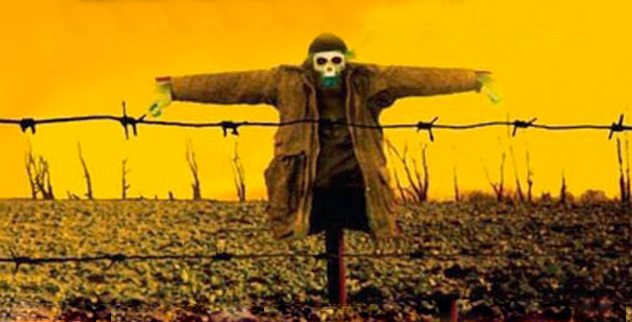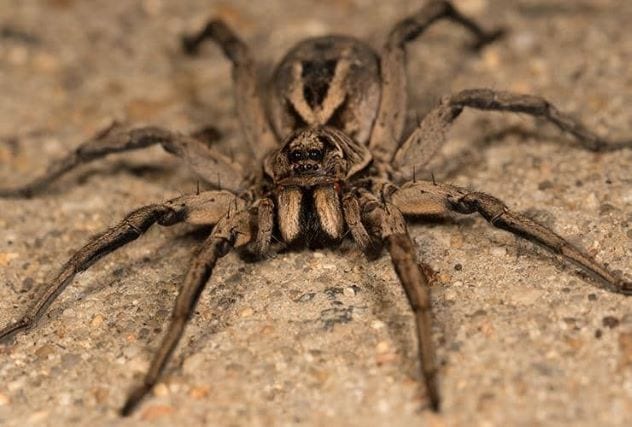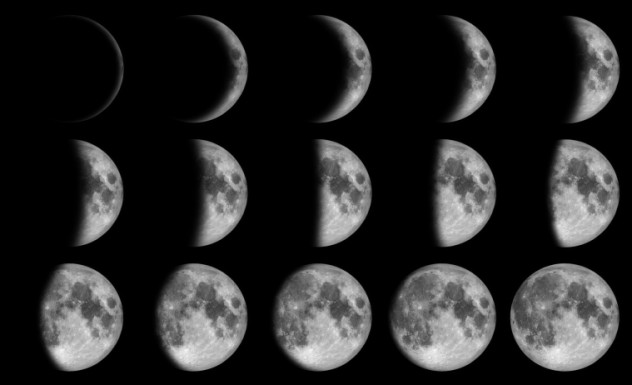 Movies and TV
Movies and TV  Movies and TV
Movies and TV  History
History 10 Things You Never Knew About Presidential First Ladies
 Movies and TV
Movies and TV 10 Zombie Movies That Will Actually Terrify You
 Humans
Humans 10 Times Scientists Were Absolutely Sure… and Absolutely Wrong
 Our World
Our World 10 Pivotal Moments for Life on Earth
 Movies and TV
Movies and TV 10 Most Realistic Medical TV Shows of All Time
 Creepy
Creepy 10 Eerie & Mysterious Ghosts of the Pacific Coast
 Weird Stuff
Weird Stuff 10 Typos That Accidentally Changed History
 History
History 10 Times Trickery Won Battles
 Technology
Technology 10 Awesome Upgrades to Common Household Items
 Movies and TV
Movies and TV 10 Movie Flops That Found Their Way to Cult Classic Status
 History
History 10 Things You Never Knew About Presidential First Ladies
 Movies and TV
Movies and TV 10 Zombie Movies That Will Actually Terrify You
Who's Behind Listverse?

Jamie Frater
Head Editor
Jamie founded Listverse due to an insatiable desire to share fascinating, obscure, and bizarre facts. He has been a guest speaker on numerous national radio and television stations and is a five time published author.
More About Us Humans
Humans 10 Times Scientists Were Absolutely Sure… and Absolutely Wrong
 Our World
Our World 10 Pivotal Moments for Life on Earth
 Movies and TV
Movies and TV 10 Most Realistic Medical TV Shows of All Time
 Creepy
Creepy 10 Eerie & Mysterious Ghosts of the Pacific Coast
 Weird Stuff
Weird Stuff 10 Typos That Accidentally Changed History
 History
History 10 Times Trickery Won Battles
 Technology
Technology 10 Awesome Upgrades to Common Household Items
10 Mind-boggling Misconceptions
Is crop production so inadequate that millions of people will starve in the future? If you are aboard an airplane that is struck by lightning, are you likely to be killed? Does herbicide use create resistant “super weeds”? Should you make out your will before undergoing general anesthesia? Arachnids make webs; that’s what they do—right? Is it true that no one knows what became of the Anasazi?
California is doomed: it’s going to fall into the ocean! Ninth-grade high school students and Harvard University seniors agree that the Earth causes the phases of the moon. Want to know where a comet has been? Check out its tail. Forensic evidence is infallible. All these widespread beliefs are mind-boggling misconceptions. Here’s why.
Ten Misconceptions About The Illuminati
10 More and More Food Production Is Needed

Although some organizations sound the alarm that more and more food production is needed to ward off mass starvation in the near future, this is not true. As Professor Hans Herren, President of the Millennium Institute, states, the world’s supply of food can feed “14 billion people,” or about two times the planet’s present population. According to the United Nations, the world’s population is predicted to “level off at about 10 billion,” so there is already a large surplus in the food supply.
Although, “a billion people . . . go hungry,” even today, their plight is not caused by a global food shortage, but results from “economic and political inequality and general disruption (notably war).” Instead of being worried about food production, maintenance and resilience . . . care of the biosphere, human (and animal) welfare, freedom for man, and adherence to absolute truth should be the focus of the present and the future.
9 Lightning Destroys Airplanes

Fear of flying isn’t just the title of a novel by Erica Jong; it’s a real fear known as aviophobia or aerophobia. People who suffer from “flying phobia report high levels of anxiety associated with all stages of flying, including anticipation, boarding, in-flight and landing, with the highest self-reported anxiety ratings being associated with take-off and bad weather/turbulence.”
Do aviophobic people have reason to fear inclement weather, such as thunderstorms? Not really. During thunderstorms, airplanes are struck by lightning. However, aircraft and bolts of lightning collide far less often than one might suppose, and when a plane is struck, the incident, far from causing it to plummet to the ground “in a blazing inferno,” no one aboard will be electrocuted, and “the plane won’t crash.” At most, “the flight crew [might] notice slight effects” or “the aircraft [could sustain] some damage [and] require some maintenance.”
In a nutshell, here’s why passengers and crew are safe aboard airplanes even during thunderstorms. Although a lightning strike “sends currents of up to 200,000 amperes through the plane’s skin and frame,” the electricity “follows the outer surface of the frame and jumps back into the air, possibly leaving small burn marks where it enters and leaves.” Otherwise, everything—and everyone—is fine.
8 Herbicide Use Creates “Super Weeds”

Over time, the repeated use of herbicides yields “super weeds” that develop resistance to the very weedkillers that were supposed to destroy them. At least, that’s a misconception among many. Although weeds do tend to develop some resistance to herbicides, the fact is that this enhancement does not create “super weeds” and does not occur without “drawbacks.”
Joe Armstrong, a field scientist with Corteva Agriscience, explains: “A famous example is atrazine-resistant velvetleaf . . . . It’s resistant in a greenhouse or out in a field, but it has a ‘fitness penalty.’ [Resistant] plants don’t grow as tall [or] as quickly as a normal velvetleaf.”
However, plants’ resistance to herbicide is a “concern,” although it is a development that can be “mitigated”; it is possible to “prevent future resistance,” Armstrong advises, by employing a “weed control program that includes burndown, preemergence and postemergence herbicides with residual control” and supplementing these practices with “tillage, crop rotation and cover crops,” as appropriate.
7 Anesthesia Is Often Fatal or May Otherwise Go Awry

If you fear undergoing general anesthesia, you are not alone. According to a 2018 study, 88% of the 400 people surveyed “experienced preoperative fear,” either because of “preoperative pain,” being conscious during the operation, “being sleepy” after the surgery, “revealing personal issues” while anesthetized, or “not waking up after surgery.” Female respondents were “five times more likely to fear going under” than their male counterparts, and those forty years old and older were more likely to fear the procedure more than younger respondents. Obviously, a sizable number of people are frightened, if not terrified, of undergoing general anesthesia, many because they believe that undergoing general anesthesia could be fatal.
These fears that general anesthesia may go awry are largely unjustified. “Remaining aware during anesthesia” occurs in less than one-tenth of one percent of general anesthesia applications. The odds of “dying after surgery [are] one-tenth of what it was in 1970.” What is the likelihood of dying “under general anesthesia”? There is a 0.0001 percent chance, which equates to one chance in 100,000. The belief that general anesthesia is often fatal or otherwise goes awry simply is not supported by the facts.
6 All Arachnids Make Webs

Everyone knows that arachnids make webs. It’s what they do, right? Wrong on two counts. First, not all arachnids are spiders; some are scorpions, ticks, mites, harvestmen, or solifuges. Second, only some spiders and only one type of mite, the spider mite, make webs.
Defined as “a silk structure made to catch prey,” a web is made by “only about half of the known spider species.” Other spiders, such as those of “the wolf spider, jumping spider, ground spider, sac spider, lynx spider, and other spider families,” hunt or, like “trap door spiders, crab spiders, and others,” ambush prey. Instead of making a web to ensnare their victims, hunters employ “silk structures that are not webs,” such as “the [hunter spiders’] dragline (the single thread all spiders leave behind them when they walk),” the Araneine orbweaver’s egg sac; or the jumping spider’s retreat “(a little silk ‘house’ the spider rests in).”
5 The Anasazi Disappeared without a Trace

According to a widespread misconception, the Anasazi, or ancient Pueblo people, vanished—without a trace. This erroneous belief is one of the “most persistent” that archaeologists encounter. The Four Corners region, consisting of the areas of what are now southern Utah, southwestern Colorado, northern Arizona, and northwestern New Mexico, which comprised the “middle territory” of the Anasazi’s homeland, was “depopulated” between 1260 and 1300.
The emigrants didn’t simply disappear into thin air, though. Instead, “they made new homes and began new lives with their friends, relatives, and other Pueblo groups to the east, along the Rio Chama and Rio Grande, to the south at the Pueblos of Zuni, Acoma, and Laguna, and to the west with the Hopi.”
4 California Is Doomed to Fall into the Ocean

People have been waiting for some time now for California to split off from the continental United States and fall into the ocean. It is just a matter of time, they insist. All it will take is an earthquake powerful enough to cause the rift.
Part of the reason for this misconception may be that the general public is not up to date on “advancements” that have occurred during “short time periods” in the “relatively new science” of geology and are more likely, therefore, to believe the dramatic, but spurious, situations Hollywood filmmakers include in disaster and other types of movies.
Why couldn’t the Golden State become a sunken island? The nature of the San Andreas fault prevents such a “drop.” The fault itself is a consequence of the Pacific Plate’s northwest movement “along the Northern Plate,” which makes most of southern California’s faults “move roughly parallel to one another in opposite directions with little vertical movement.” As a result, although the “faults have some vertical offset,” it is not enough to overcome the “horizontal effect” of their movement. Therefore, Californians need not worry about being drowned at sea as their state sinks to the ocean’s floor.
Californians aren’t completely out of the woods, though, because “the land to the west of the right-lateral fault will move progressively northward along the California coast,” so that, someday, in the distant future, “Los Angeles will . . . be adjacent to San Francisco.” Even though California will continue to exist, in a rather different configuration, the earthquake that causes such changes nevertheless will produce “devastating effects.”
3 The Earth Causes the Phases of the Moon

During the 1980s, seniors about to graduate from Harvard University were found to be laboring under the same misconception regarding the cause of the phases of the moon as were ninth-grade students “in a nearby school.” Both sets of students believed that the moon’s phases result from the Earth’s shadow, a misconception that is shared by more than a few members of the general public as well.
Fortunately, we don’t need to rely on Harvard to explain why the moon goes through phases. Dr. Barbara Cohen, a planetary scientist at NASA, explains that the moon’s phases result from the amounts of sunlight reflected off it as the rotating moon revolves in its orbit around the Earth.
A “new moon” isn’t visible to us, because the sunlight illuminating it is on the side of the moon facing away from the Earth. A “full moon” appears round because sunlight reflects from its entire disc. Between these two phases are those of the “waxing” moon and the waning moon. As the moon waxes, due to its rotations as it revolves around the Earth, the moon reflects increasingly more sunlight, seeming to get bigger and bigger, until it becomes a gibbous “half-moon.” Then, the moon “wanes,” as it reflects less and less sunlight until it becomes a full moon again. The least amounts of sunlight cause the moon to appear as a crescent.
2 A Comet’s Tail Trails Behind It

In photographs (and Hollywood movies), a comet’s tail always follows it. This creates the misconception that the tail points in the direction from which the comet has traveled. In fact, a comet usually has two tails.
Leftover from the formation of the solar system, a comet is a ball of rock and ice. As it nears the sun, solar radiation vaporizes part of the comet (its “nucleus.”) As a result, a glowing cloud of dust and gas is ejected, which forms a “comma” around the nucleus. As the heavenly body further approaches the sun, its tails develop and “are expelled from the . . . nucleus by the solar wind.”
The first tail, “a jet of ionized particles . . . always points directly at the sun,” while the other tail, consisting of dust, which is not “as strongly affected by the solar wind, . . . curves back somewhat, toward the comet’s path.”
As the comet rounds the sun and begins streaking back toward “the edges of the universe,” the tail stretches “directly away from the sun” and is actually in front of the comet.
1 Forensic Evidence Is Foolproof

Many people also assume that forensic evidence is foolproof. It isn’t. This misconception is probably also the result of the way that movies and television present such evidence. In fact, as a Microbiology Society article points out, it is only “very rarely [that] forensic science [can] identify evidential material with absolute certainty, or can compare and ‘match’ two samples to the exclusion of all other possibilities.” Such evidence is seldom the pristine material that is shown on “CSI programmes.” Instead, forensic evidence tends to be “minute” in quantity and frequently “decomposed or damaged,” facts which may greatly reduce its effectiveness in proving guilt or innocence.
Trace evidence that police suspect “have been transferred between a suspect and a victim” also poses significant problems: was it transferred “directly” from the suspect to the victim, or was it transferred “indirectly,” possibly among a number of intermediaries between the suspect and the victim. Likewise, maybe the suspect’s DNA, transferred to the victim’s hand when they “shook hands . . . at a social event” was later transferred to the victim’s underwear by the victim herself, during a trip she made to the restroom.
Many other factors can negatively affect the usefulness of forensic evidence, both during the investigation and examination of the evidence and during its presentation to the jury. The authors of the Microbiology Society article offer an extended example of the latter difficulties involving “the use of microbiology in the investigation of crime.”
First, a layperson may find it difficult to “visualise” such evidence, requiring “the forensic scientist . . . to explain to a jury of diverse educational backgrounds the fundamental nature of the microscopic evidence” in a manner such that the explanation will be understood.
Next, the expert might need to explain “more abstract issues such as [the] transfer and persistence of the particular evidence type,” as well as “concepts such as frequency and probability.” Anywhere along the process, the forensic scientist runs the risk of overwhelming the jury. The result could be acquittal or a mistrial due to a hung jury, which could, in some countries, incur the expense of another trial.
10 Misconceptions About The Napoleonic Era
About The Author: An English instructor at the University of Nevada Las Vegas, Gary L. Pullman, a regular contributor to Listverse, lives south of Area 51, which, according to his family and friends, explains “a lot.” His five-book series, An Adventure of the Old West, is available on Amazon at https://www.amazon.com/gp/product/B07THD35QX?ref_=dbs_dp_rwt_sb_tkin&binding=kindle_edition.








